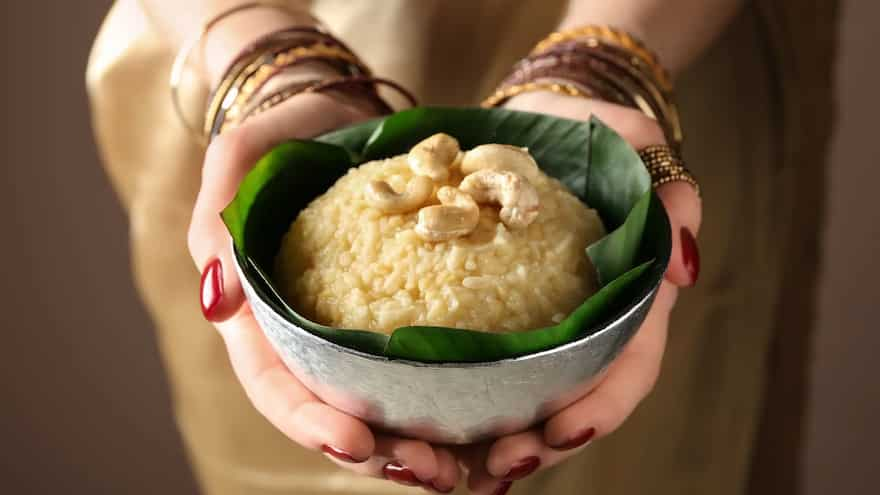An ancient and intriguing ingredient renowned for its tranquil aroma and skin-friendly properties might already be a familiar presence in your life. Camphor, often associated with its soothing qualities, can be found in various products like perfumes, balms, and medicinal oils, providing relief and relaxation. Additionally, it plays a vital role in religious ceremonies, where its fragrant fumes are believed to purify the surrounding atmosphere.
This colourless solid with a waxy texture boasts a strong aroma originating from trees like the camphor laurel that is native to East Asia, the kapur tree in Southeast Asia, and other related species in the laurel family. What may come as a surprise is that naturally produced camphor is edible in regulated quantities and has enriched the flavours of condiments and dishes in many cuisines for centuries. For centuries, camphor has been known to be a forest produce that is extracted from the condensed vapour given off by the roasting of wood chips cut from Camphora officinarum and later by passing steam through the pulverised wood and condensing the vapours.
Synthetic camphors, on the other hand, are also widely available on the market, and they are made artificially from chemicals, mainly turpentine. The chemical-laced camphor is inedible and mostly used only for religious ceremonies. While using edible camphor as well, one must exercise caution, as it might cause camphor poisoning if it is not extracted well or is adulterated. Thus, while buying edible camphor for cooking purposes, it is important to purchase the natural product from reliable producers who may not mind disclosing where they sourced the raw material for extracting camphor.

According to Ayurveda, edible camphor is believed to be a natural remedy for many ailments and offers a range of health benefits. "Camphor is a stimulant and sedative at the same time. It is known for its anti-inflammatory properties, and it is also popular as an aphrodisiac that enhances sexual stamina. In our Ayurvedic treatments, camphor, along with coconut oil, is also used as a relaxant that aids in promoting better sleep by calming the nervous system and reducing stress, making it a potent sleep aid," says Dr. Neetha Ganesh, Chief Physician at Ayurdhan Therapy Centre in Bengaluru.
She adds, "It's known for its effectiveness in treating nasal congestion during colds. However, the quality and purity of the camphor used are of the utmost importance. Applying camphor essential oil to your chest or inhaling its steam can provide instant relief. It's also a go-to solution for skin irritations, offering relief from itching, swelling, and redness due to its anti-fungal and pain-relieving properties."
When you visit Hindu temples, especially in South India, after the prayers are complete, the priests pour a spoonful of holy water onto our cupped palms, meant to be consumed. It is known as tirtha or teertham. While it looks just like water, the taste is musty, refreshing, and soothing all at the same time. The addition of a pinch of camphor brings about a burst of minty freshness.

According to many temple priests, theertham, sanctified through the divine touch of the gods during abhishekam and the resonance of sacred mantras, serves as a conduit for receiving divine blessings and positive energy. It is a multifaceted essence, both spiritually charged in religious rituals and, as herbal teertham, a source of well-being. However, most recipes include camphor in very small quantities to enhance the flavour and aroma of the dishes. For instance, a pinch of camphor or a gram of the ingredient is used to make 4 bowls of payasam or 8–10 laddoos.
Let us explore the use of edible camphor in Indian cooking through these five types of food that have stood the test of time:
Temple Prasadams
If you have eaten the laddoos offered as prasadam in temples, you might notice a difference in taste from the ones available in a store or prepared at home as well. A touch of edible camphor, along with other ingredients like besan, cardamom, ghee, sugar, dry friuts, and more, adds to the rounded taste and minty freshness. Coorg green cardamom is known to exude a camphoraceous flavour and aroma to a certain extent as well. Therefore, a generous addition of this ingredient is probably what makes for the unique earthy and musty taste in the famous Tirupathi temple's Sri Vari Laddoos Prasadam too.

A popular South Indian food blogger, Rajeswari Vijayanand of Rak's Kitchen, treasures edible camphor as one of her three secret ingredients, infusing her sakkarai pongal with an enchanting aroma and divine flavour. She lovingly shares cherished memories of crafting this dish with her mother in a temple, and the recipe, originally intended to be concise, unfolds to include these precious reminiscences and the unique essence that edible camphor imparts.
According to Vijayanand, her mother attributes the distinctive temple-style flavour to this special ingredient. Yet, it's not just sakkarai pongal that benefits from edible camphor's touch; Vijayanand incorporates it into various delectable creations like boondi laddoo, panakam, panchamritam, and sweet aval (flattened rice), enhancing the richness and authenticity of these traditional South Indian delicacies.
Panakam, a traditional South Indian lemon-based drink, offers a unique twist to lemonade and is popular during hot summers and festivals like Ram Navami. Sweetened with jaggery, it boasts flavours of cardamom, dry ginger, edible camphor, and tulsi leaves. Panchamirtham, a sacred offering, is a delightful prasadam made with bananas (fruits), milk, ghee, curd, and honey. Flavoured with cardamom and edible camphor (Pachai karpooram), it offers a divine taste.

Payasams:
Payasam is the most unavoidable sweet dish during festivals and other festive occasions like weddings, religious observations, etc. Payasam is a mandatory dish of an Onam sadhya in Kerala and is also prepared for festivals like Diwali, Ugadi, and more. Be it sago, dal, or vermicelli payasam, a touch of edible camphor or paccha karpooram is one of the mandatory ingredients in this South Indian sweet delight.
According to Dassana Amit, a food blogger from Dassana's Veg Recipes, adding a pinch of edible camphor to sweet dishes works like magic, infusing the entire dessert with a subtle, perfume-like essence. On her blog, she says that this practise is most prevalent during festive occasions and when conducting religious ceremonies at home.

Pickles
In the age-old practise of pickling in the regions of Karnataka, edible camphor was used to flavour the pickles. A Kannada encyclopaedia, Lokopakara, written in 1025 AD, is known to make a mention of the inclusion of edible camphor in its pickle recipes. According to KT Achaya's The Illustrated Foods Of India, "the use of camphor to flavour pickles in the Karnataka area is noted in AD 1130 and in a curd-rice dish in Gujarat in AD 1520."
Betel Leaf Quid or Paan
Edible camphor made its way to Paan millenials ago, as mentioned in KT Achaya's The Illustrated Foods Of India, which states, "Wealthy people used it as an ingredient in a betel leaf quid; it was used with four other expensive spices by the royalty as a panchasugandha; by the gentry of Kerala in AD 1563; and in the Lingapurana in Kannada in AD 1594." It also mentions that camphor was an item served daily in the seventh century AD to Xuan Zhang while he was resident at the Nalanda Buddhist monastery, with the speculation that it might have been used to flavour his paan, or drinking water, or for use as incense.

Samosas
The Ni'matnama, a late fifteenth-century book, is a recipe journal that presents the culinary and lifestyle wisdom of the Sultan of Mandu, Ghiyath Shahi, expanded upon by his son Nasir Shah. It offers recipes for delectable dishes, aphrodisiacs, and remedies for the royal court. The Nimatnama's opening highlights various samosas with diverse fillings, including condensed milk and meat.
One recipe involves mixing wheat and ghee, frying meat, infusing a sweet aroma with roses, and crushing it for a unique taste. The use of camphor is mentioned in this recipe, which states, "Add pot herbs, musk, camphor, cardamom, and cloves and mix them all together. Stuff the samosas, fill them fully, and pick them up by hand."


